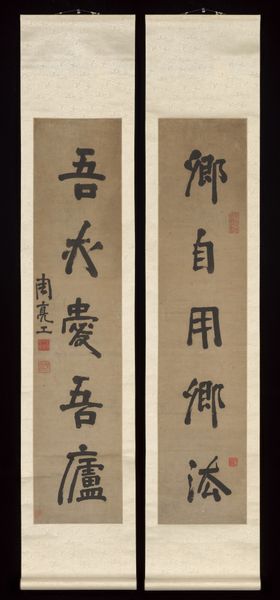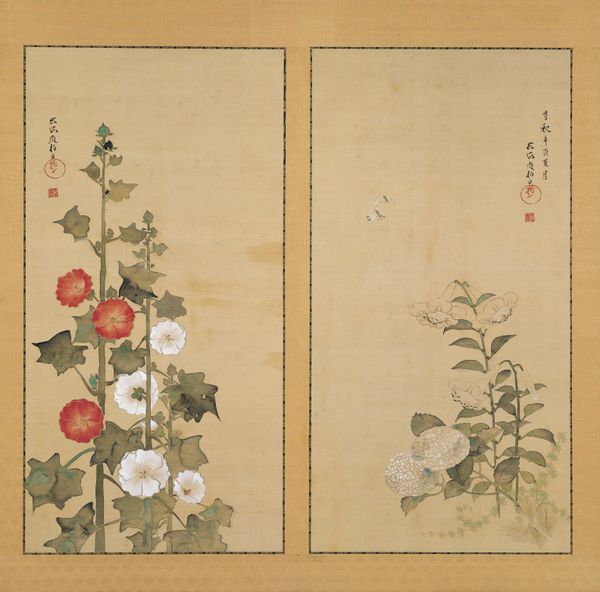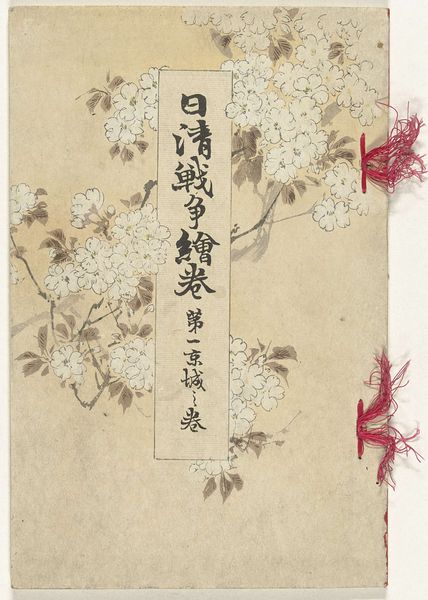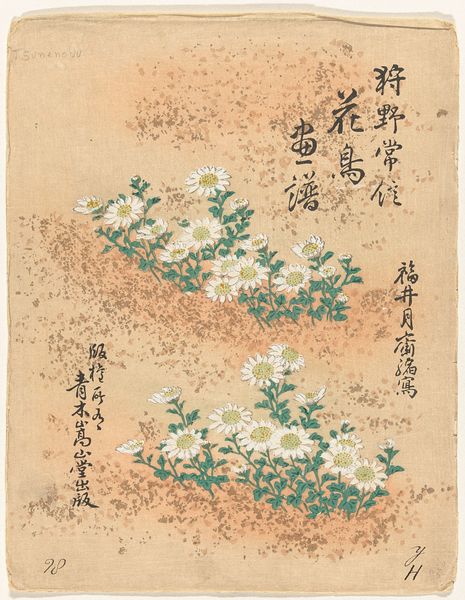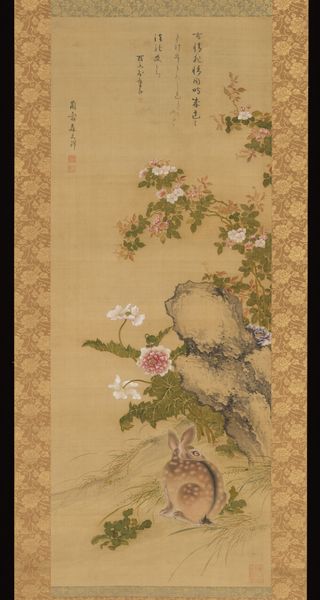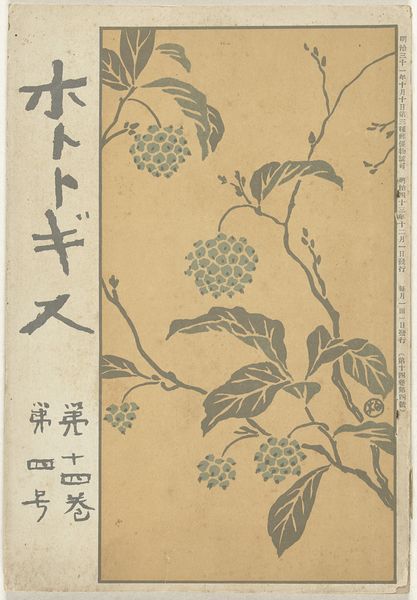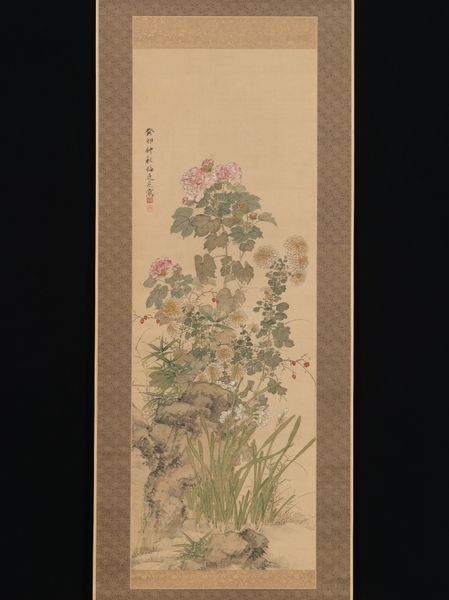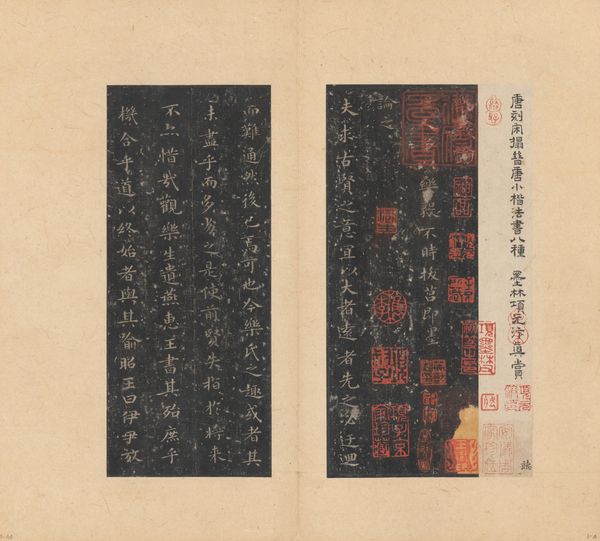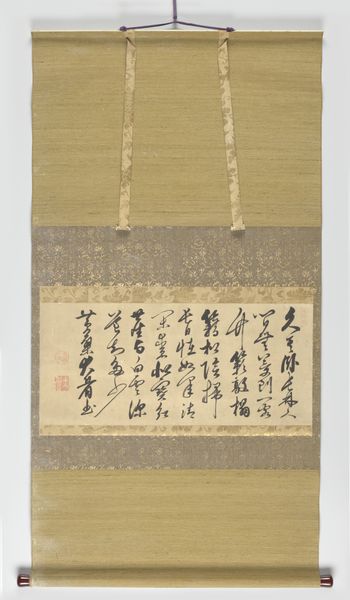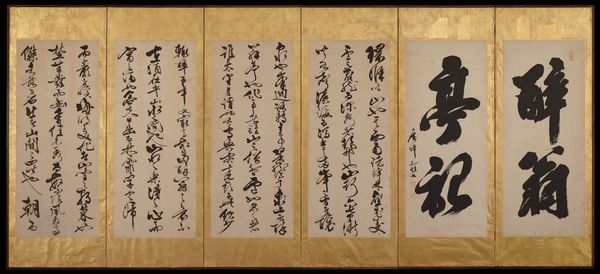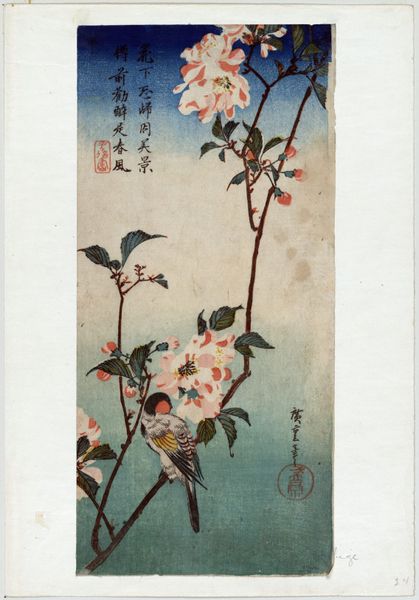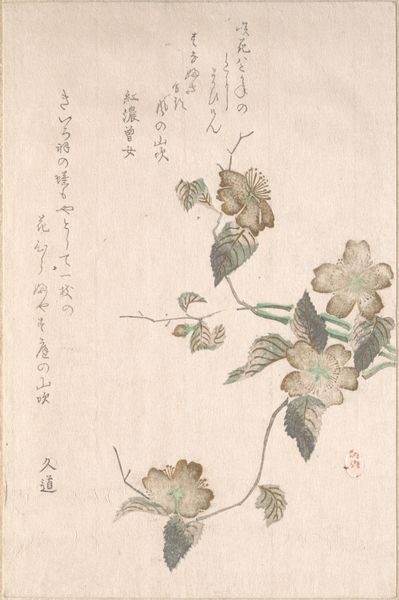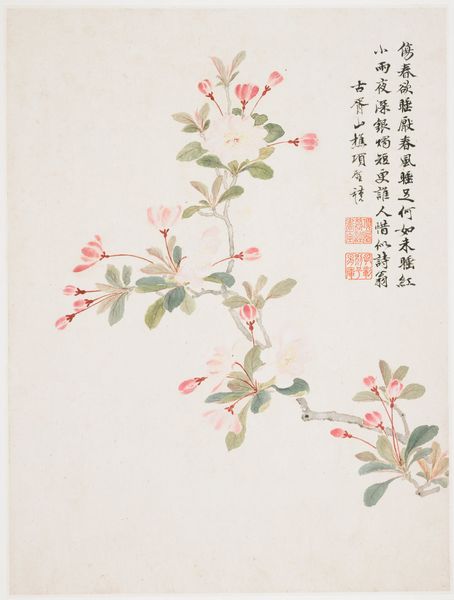
tempera, painting, paper, ink
#
organic
#
tempera
#
painting
#
asian-art
#
landscape
#
japan
#
paper
#
ink
#
organic pattern
#
calligraphy
Dimensions: Image (each): 55 × 22 3/8 in. (139.7 × 56.8 cm) Overall with mounting (each): 87 1/2 × 27 5/16 in. (222.3 × 69.4 cm)
Copyright: Public Domain
Rai San’yō created these paintings and calligraphy on paper around 1820, during Japan’s Edo period. Here, the artist links the visual and the textual, reflecting a wider cultural emphasis on erudition and artistic versatility. The image of the peonies speaks to the influence of Chinese art and culture on Japanese artistic traditions. Peonies were a popular motif in Chinese art, symbolizing wealth and prosperity. In Japan, such imagery was embraced by the literati class, known as “Bunjin,” who sought to emulate Chinese ideals of scholarship and artistic expression. Rai San’yō himself was a prominent figure in this movement, known for his poetry, calligraphy, and painting. His work often reflected his engagement with Confucian ideals. To fully appreciate this work, it's essential to look at the history of the Bunjin movement and the social context in which it emerged. Resources in local libraries and online databases could help you to research its philosophical underpinnings. Exploring this history can help us understand how artists like Rai San’yō navigated the complex cultural landscape of their time.
Comments
No comments
Be the first to comment and join the conversation on the ultimate creative platform.
